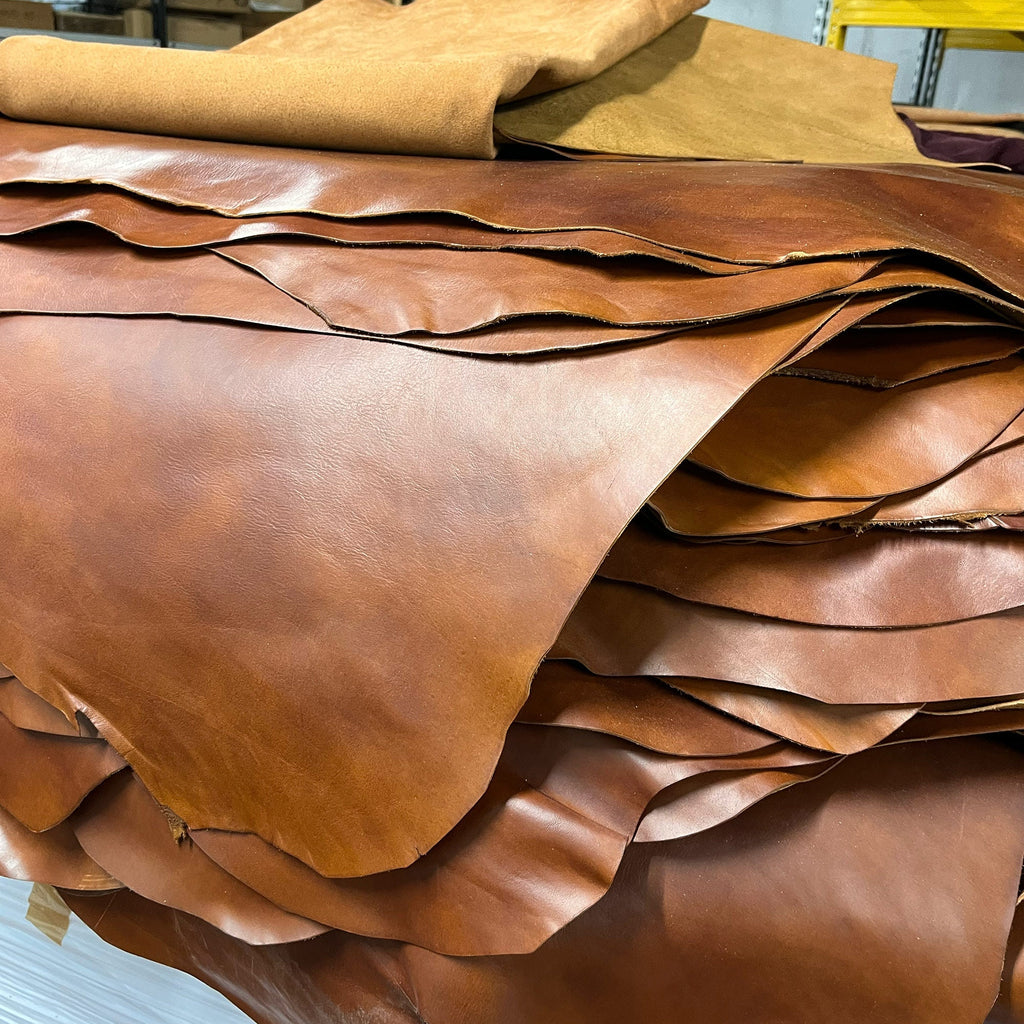The Different Types of Leather Explained: Full-Grain, Top-Grain, Split and More
Posted by JOE FLOTO

When you’re shopping for a leather bag or accessory, you’ll see all kinds of terms — full-grain, top-grain, split, genuine. They sound similar, but the differences are huge. Knowing what each means helps you understand quality — and why some leather goods last a lifetime while others don’t.
At Floto, we craft our bags from Italian full-grain vegetable-tanned leather — in my opnion the highest quality available. Here’s a clear breakdown of the main types of leather and why full-grain stands apart.
1. Full-Grain Leather: The Highest Quality
Full-grain leather comes from the top layer of the hide, where the natural grain remains completely intact. This layer includes all the dense, durable fibers that give leather its incredible strength and character.
Because it’s not sanded or corrected, full-grain leather shows the hide’s natural beauty — subtle variations, markings, and texture that make each piece unique. Over time, it develops a rich patina that tells the story of your journeys and grows more beautiful with age.
At Floto, we use vegetable-tanned full-grain leather tanned in Tuscany using natural plant extracts — a slow, artisanal process that results in deep color, a warm aroma, and a natural feel that only gets better over time. I can't think of a better Floto example of this leather than the Roma Travel Bag.
Leather Characteristics:
Top surface of the hide, unaltered grain
Strongest, most durable type of leather
Develops a natural patina with use
Used in heirloom-quality goods
2. Top-Grain Leather: Smooth and Refined
Top-grain leather also comes from the upper portion of the hide, but the surface has been lightly sanded or buffed to remove imperfections. This creates a smoother, more uniform appearance and makes it slightly more resistant to stains.
While it still offers good quality and flexibility, some of the hide’s natural strength and texture are lost in the finishing process. Top-grain leather tends to stay looking new for longer but doesn’t develop as much depth or character with age as full-grain does.
Leather Characteristics:
Sanded and finished for a smooth look
More uniform color and grain
Less natural texture and patina development
3. Split Leather: Lower Layers of the Hide
Split leather is made from the bottom layers of the hide after the top-grain portion has been split away. It’s often embossed or coated to imitate full-grain or top-grain leather.
Good quality split calfskin that was tanned by a premium Italian tannery can be an excellent material for women’s handbags. It’s naturally more structured and durable, offering a refined, chic aesthetic when finished properly.
At Floto, some of our women’s handbag collections are made with this premium split leather — anything made with our Pebble Finish and Saffiano Finish leather. These leathers are especially popular because they maintain their shape, resist water and scratches, and stay vibrant and even in color, allowing your bag to look beautifully new for years.
Leather Characteristics:
Made from lower layers of the hide
Often finished or coated for appearance
Does not patina and even in color
4. What “Genuine Leather” Really Means
Many products are labeled “Genuine Leather,” but this term simply means the item is made from real animal hide rather than synthetic (PU or faux leather).
It’s important to understand that “genuine leather” is not a grading system — it doesn’t indicate quality. A genuine leather label could apply to full-grain, top-grain, or even split leather products.
In other words, all full-grain leather is genuine, but not all genuine leather is full-grain.
Leather Characteristics:
Means “made from animal hide,” not fake
Not a quality indicator or grade
Common marketing term, often vague
5. Why Do We Use Full-Grain Vegetable Tanned Leather?
We believe leather should get better with age, not wear out. That’s why every Floto travel bag, briefcase, and many handbags are made from full-grain Italian vegetable tanned leather, produced using traditional tanning methods in Tuscany.
This natural process, using bark and plant extracts instead of harsh chemicals, takes time — but the result is worth it: a supple, rich, and long-lasting leather that develops a warm patina unique to every owner. Without the use of heavy chemicals it is also safer and more natural.
Why it matters:
Naturally tanned, chemical-free process
Deep, warm tones that age beautifully
Durable enough for decades of use
In Summary
When it comes to leather, the difference between grades isn’t just cosmetic — it’s the difference between a bag that lasts a lifetime and one that wears out after a few years.
If you value craftsmanship, sustainability, and timeless design, full-grain vegetable tanned leather is the finest choice — and it’s the foundation of every Floto piece.


